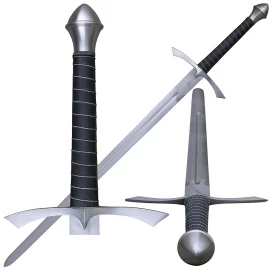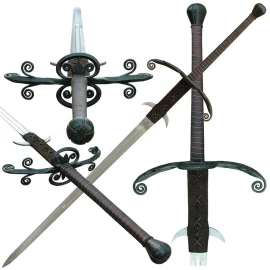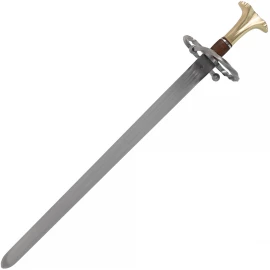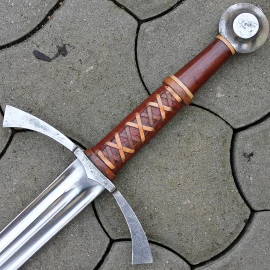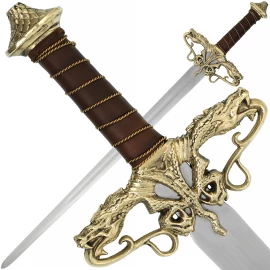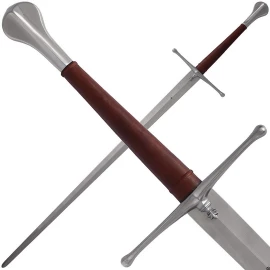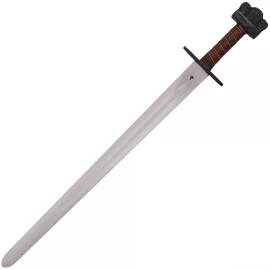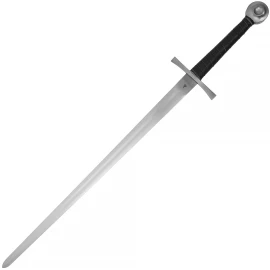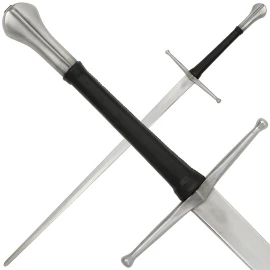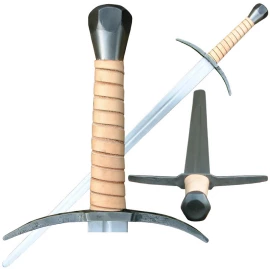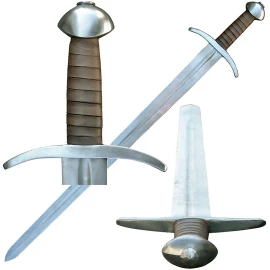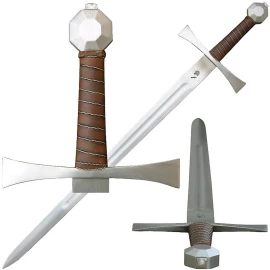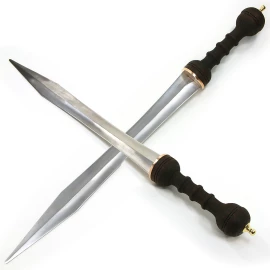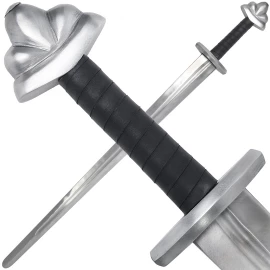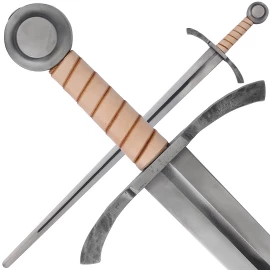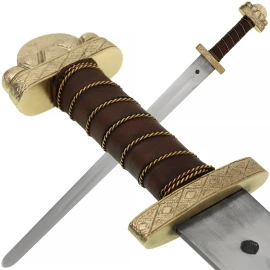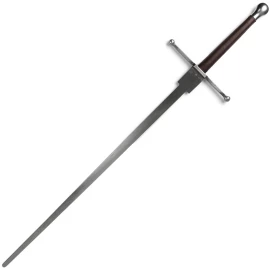Spatha Trygve
The blade of the sword is made lighter by milled groove and then polished to the required shape. Decorative pommel and guard are assembled from three parts each. Two parts are made from steel (blackened by fire) and one from brass. All parts are riveted based on historical findings. Pommel and guard are then decorated with cutting. The handle is made from a 5mm leather strap and decorated by double wired brass wire. Sword is perfect for historical reenactment and scenic fencing. As usual with two years of combat guarantee. Further product information ...
Spatha Trygve
- Overall length 870mm
- Blade length 690mm
- Handle length, inner distance between pommel and guard: 124mm
- Cross section of the blade at the guard: 44.9 x 4.4mm
- Cross section of the blade 10cm off the point: 30.3 x 3.3mm
- Thickness of the striking edge on the photographed sword 2.2mm
- Length of the cross-guard 114mm
- Length from the pommel 84.8mm
- The balance is about 6cm off the guard
- The handle is wrapped in black cowhide leather and two pairs of twisted brass wires
- Weight 1422 g
- Used materials: Spring Steel 54SiCr6 suitable for blade forging, hardened to 54 - 56 RCW. The blade made from this steel is very sturdy.
Specifications may vary slightly from piece to piece.
Spatha served as a model for the various medieval swords later in history, and it is well documented in archaeological findings from the Migration Period. Spatha was a double-edged sword, measuring 70-95cm, with a 4-6cm wide blade. It was an exclusively cutting weapon, which is also indicated by the fact that the blade usually had a rounded tip unsuitable for stabbing. Spatha usually had a shorter bronze or iron hilt that was finished in bone or wooden accents. The sword guard was quite simple and small. Spatha was used until the middle of the 7th century (some findings, however, indicate later use), it was worn fastened on a long shoulder strap, later fastened to a belt. The spatha scabbards were made of wood and covered in leather or birch bast. Hilts of some spatha swords were decorated with gold, silver, ivory and precious stones, mostly in Asian design, which points to contacts between East and West.
We are here for you!








